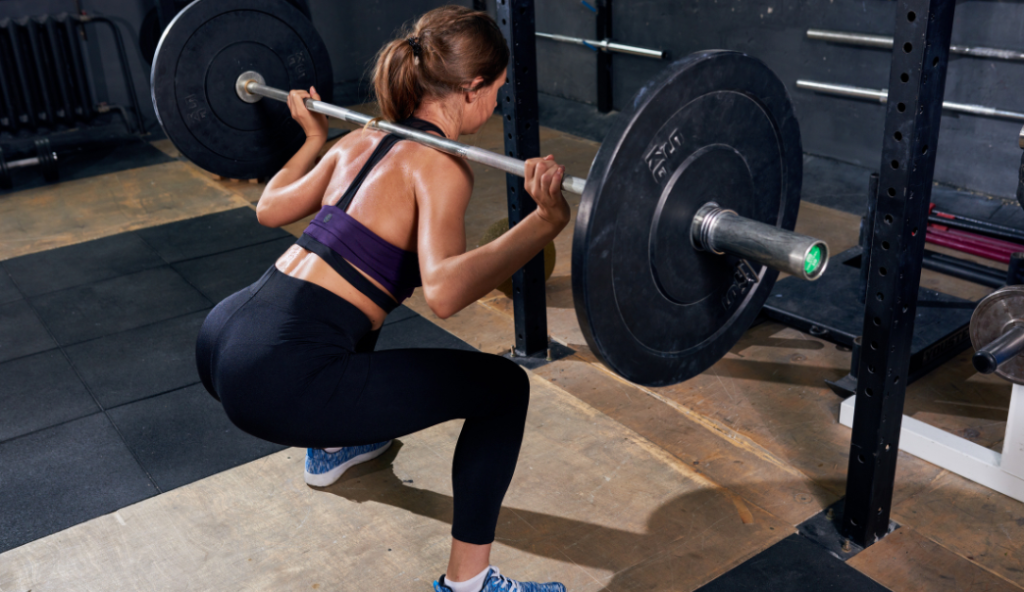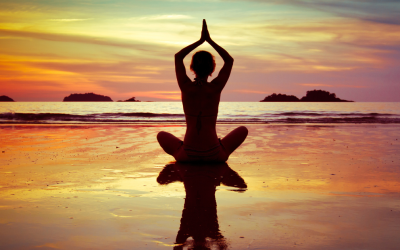If you’re an avid fitness enthusiast, you may have experienced back pain after doing squats. It’s a common problem that many people encounter, but the good news is there are ways to fix it.
This article will explore various strategies and techniques to alleviate back pain after squats, allowing you to continue your fitness journey without discomfort.
Identifying Causes of Back Pain Post-Squats
Before diving into solutions, it’s essential to understand the underlying causes of back pain after squats. One possible cause is improper form and technique while performing the exercise. When done incorrectly, squats can put excessive strain on the lower back, leading to discomfort and pain. Maintaining proper alignment throughout the movement is crucial, ensuring that your knees are tracking over your toes and your back is straight.
Another factor contributing to back pain post-squats is tight or weak back, core, or hips muscles. When these muscles are not adequately conditioned, they may struggle to support the spine during squatting. Tightness in the hip flexors, hamstrings, or glutes can also affect the alignment of the pelvis and contribute to back pain.
Additionally, underlying conditions such as herniated discs or spinal stenosis can make individuals more susceptible to experiencing back pain after squats. These conditions may cause the spinal structures to become more vulnerable to stress and strain, leading to discomfort during exercises that involve the lower back.
Identifying the root cause of your back pain after squats is crucial in finding an effective remedy for your discomfort. It is recommended to consult with a healthcare professional or a qualified fitness trainer who can assess your form, muscle imbalances, and any underlying conditions that may be contributing to your pain. They can provide personalized guidance and develop a targeted plan to address the specific causes of your back pain.
Correcting Form and Technique in Squats
Examining your form and technique is the first step in fixing back pain after squats. Proper squat form is crucial to avoiding unnecessary strain on your lower back. Start by ensuring your feet are shoulder-width apart and your toes are slightly turned out. Engage your core and keep your back straight throughout the movement. As you descend, push your hips back as if you’re sitting on an imaginary chair. Regularly practicing correct form will help you avoid future back pain.
When it comes to squatting, form and technique are of utmost importance. It is not just about lifting heavy weights; it is about performing the exercise correctly to prevent injuries and maximize the benefits. Paying attention to the details of your form ensures that your squatting technique is on point.
One aspect to consider is the positioning of your feet. Placing your feet shoulder-width apart provides a stable base of support and allows for proper alignment of your knees and hips. Toes slightly turned outwards can help maintain balance and engage the correct muscles during the squat.
Equally important is engaging your core and keeping your back straight throughout the movement. Your core muscles act as a stabilizer, helping to maintain proper alignment and reducing the strain on your lower back. You can protect your spine by activating your core and avoid unnecessary pain or injury.
As you descend into the squat, you must push your hips back as if sitting on an imaginary chair. This movement pattern helps to engage your glutes and hamstrings, distributing the load more evenly and reducing the strain on your lower back. By mastering this hip hinge motion, you can ensure that your squat is effective and safe.
Furthermore, it is essential to consider the depth of your squat. Going too low can put excessive pressure on your back, especially if you lack the necessary flexibility or strength. Aiming for a range where your thighs are parallel to the ground is recommended. However, it is crucial to listen to your body and not force yourself to go lower than what feels comfortable for you. Gradually increasing your squat depth over time, as your mobility and strength improve, can be a more sustainable approach.
Remember, correcting your form and technique in squats is an ongoing process. It requires patience, practice, and a willingness to listen to your body. By prioritizing proper form and paying attention to the details, you can enjoy the benefits of squats while minimizing the risk of back pain or injury.

Stretching and Strengthening Exercises for Back Pain Relief
Stretching and strengthening exercises can provide immense relief for back pain after squats. Start by incorporating dynamic stretches into your warm-up routine. These stretches help to increase blood flow and flexibility in your muscles, reducing the risk of strain.
Some great exercises include the cat-camel stretch, where you get on all fours and arch and round your back, and the seated forward bend, where you sit on the ground with your legs extended and reach for your toes. These exercises will target your back, core, and hip muscles, improving their flexibility and strength.
Additionally, incorporate exercises specifically targeting your lower back, such as the Superman and Bird Dog exercises. These movements help strengthen the muscles in your back, providing better support and stability during squats.
The Role of Nutrition in Back Pain Relief
While focusing on exercises to alleviate back pain after squats is essential, paying attention to your nutrition is also crucial. Proper nutrition significantly affects your overall health and can reduce pain.
Ensure your diet includes adequate amounts of essential nutrients like calcium, vitamin D, and magnesium, aiding muscle recovery and promoting bone health. Calcium is vital for maintaining strong bones, while vitamin D helps with calcium absorption. Conversely, magnesium plays a crucial role in muscle relaxation and can help alleviate muscle tension and spasms.
Furthermore, staying hydrated is essential for maintaining healthy muscles and joints. Dehydration can lead to muscle cramps and stiffness, aggravating back pain. Remember to drink enough water throughout the day to hydrate your body.
Safeguarding Your Back During Strength Training
To prevent back pain after squats and other strength training exercises, it’s crucial to prioritize proper technique and safety. Avoid loading weights that are too heavy for you, as this can strain your back excessively. Gradually increase the weight over time as your strength and form improve.
Additionally, consider incorporating other exercises that strengthen your core and back muscles, such as deadlifts and hip thrusts. A strong core and back will provide stability and support during squats, minimizing the risk of injury and pain.
Furthermore, listening to your body and taking breaks when needed is important. Pushing through pain or fatigue can lead to overuse injuries and exacerbate existing back pain. Rest and recovery are as important as exercise in maintaining a healthy and pain-free back.
Lastly, consider incorporating stretching exercises into your post-workout routine. This can help relax and lengthen the muscles that may have tightened during your workout, reducing the risk of post-exercise soreness and stiffness.
By incorporating these strategies into your routine, you can effectively manage and prevent back pain after squats, allowing you to continue enjoying the benefits of strength training without discomfort or injury.
Role of Chiropractic Care in Treating Exercise-Related Back Pain
If you’re experiencing persistent or severe back pain after squats, seeking professional help may be beneficial. Chiropractic care can be an effective treatment option for exercise-related back pain. A chiropractor can assess your condition and provide targeted adjustments to align your spine correctly.
Various factors, including improper form, muscle imbalances, or overexertion, can cause exercise-related back pain. When you visit a chiropractor, they will conduct a thorough examination to identify the root cause of your pain. This may involve assessing your posture, range of motion, and muscle strength.
Determining the underlying cause and building a plan
Once the chiropractor has determined the underlying cause of your back pain, they will develop a personalized treatment plan. In addition to spinal adjustments, chiropractic care often includes additional therapies to enhance healing.
Massage and Hot or Cold Therapy
One commonly used therapy is massage. Massage can help relax tight muscles, improve blood circulation, and reduce inflammation. A chiropractor can help alleviate tension and promote pain relief by targeting specific muscle groups.
Heat or cold therapy is another technique frequently used in chiropractic care. Applying heat to the affected area can help increase blood flow, relax muscles, and reduce stiffness. On the other hand, cold therapy can help numb the area, reduce inflammation, and alleviate pain.
Exercise and Stretch Recommendations for Back Pain After Squats
Chiropractors may also prescribe specific exercises to address your exercise-related back pain. These exercises are tailored to your specific needs and aim to strengthen weak muscles, improve flexibility, and correct imbalances. By incorporating these exercises into your routine, you can help prevent future injuries and maintain a healthy spine.
In addition to the physical treatments, chiropractors often provide education and guidance on proper posture, body mechanics, and ergonomics. They can teach you how to maintain a neutral spine during exercises and daily activities, reducing the risk of further back pain.
It’s important to note that chiropractic care is a non-invasive and drug-free approach to treating exercise-related back pain. By addressing the underlying cause of the pain and promoting natural healing, chiropractors can help you find long-term relief without relying on medications or surgery.
So, if you’re struggling with exercise-related back pain, consider seeking chiropractic care. With their expertise and comprehensive approach, chiropractors can help you recover from your pain, improve your overall well-being, and get back to enjoying your favorite activities.
Addressing Back Pain after Squats Once and For All
Back pain after squats can be a frustrating setback on your fitness journey. However, you can overcome this challenge by identifying the causes, correcting your form and technique, incorporating stretching and strengthening exercises, and seeking professional help if needed.
Progress takes time, so be patient and listen to your body. You can fix back pain and continue working towards your fitness goals with determination and the right strategies!


